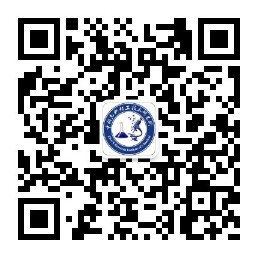欢迎访问中科光析科学技术研究所官网!
- 联系我们
- 关注微信

欢迎访问中科光析科学技术研究所官网!

免费咨询热线
400-635-0567|
眼科仪器 角膜曲率计检测项目报价? 解决方案? 检测周期? 样品要求? |
点 击 解 答  |
本标准规定了光学助视器的光学、机械要求以及试验方法。本标准适用于制造商专为视力受损者提供的低视力光学助视器,也可以带有电气元件(例如照明光源)。本标准不适用于低视力电子光学助视器。
GB/T 30117的本部分规定了非激光产品光辐射安全要求的基本原则、指导相应的通用产品规范对安全要求作出规定,同时为灯系统制造商利用灯制造商提供的安全信息提供依据。本部分规定了下列指导原则:——光辐射安全评估要求;——安全措施;——产品标识。本部分不涉及日光浴设备、眼科仪器及其他医疗/美容设备等有意辐照的光辐射安全要求,其特定的安全问题有相应的标准解决。
本标准规定了连续或者数字指示角膜曲率计的术语和定义、要求和试验方法。本标准适用于连续或者数字指示角膜曲率计。
本标准连同ISO 15004-1和ISO 15004-2:2007,规定了裂隙灯显微镜的要求和试验方法。本标准适用于通用型裂隙灯显微镜。本标准不适用于裂隙灯显微镜附件,如照相设备和激光器。若存在差异,本标准优先于ISO 15004-1和ISO 15004-2:2007。
本标准规定了准分子激光角膜屈光治疗机的术语和定义、结构和基本参数、要求、试验方法、检验规则、标志、包装、运输、贮存。本标准适用于准分子激光角膜屈光治疗机(以下简称治疗机),治疗机采用193 nm准分子激光去除角膜组织来改变角膜形状从而改善视力,主要用于屈光性角膜切削术(PRK)、原位角膜磨镶术(LASIK)等角膜屈光矫正术和治疗性角膜切削术(PTK)。
本标准给出了用于测量人眼双眼视功能和屈光不正的验光头的要求和测试方法。
本标准规定了视力表投影仪的低要求和试验方法。视力表投影仪包括一个光学投影仪和一个屏幕,由投影仪将视标投影到屏幕上,用于检测人眼的视觉敏感度、屈光特性和双眼视功能。
本标准规定了角膜地形图测量仪器或系统的术语和定义、低要求以及试验方法和程序。 本标准适用于测量人眼角膜表面形状的仪器或系统。注:可以是某一区域的表面曲率,表面三维地形尺寸或其他用来表征表面特性的球形参数。 本标准不适用于眼科仪器中的检眼镜器械。
本标准规定了眼科仪器微型角膜刀产品的分类、要求、试验方法、检验规则,标志、使用说明书,包装、运输和贮存。本标准适用于眼科仪器微型角膜刀(以下简称微型角膜刀),微型角膜刀主要用于不同层次角膜屈光手术和角膜移植手术。 本标准不包含对刀片的要求。
本标准规定了压陷式眼压计的分类、要求、试验方法、检验规则、标志、使用说明书、包装、运输和贮存。本标准适用于压陷式眼压计(以下简称眼压计),该产品供测量眼压用。
本标准适用于采用光学方法测量眼轴长的仪器。本标准规定了上述仪器和系统的低要求和试验方法。
本规程适用于角膜曲率计的首次检定、后续检定和使用中检查。验光仪角膜曲率测量和轴位测量的检定可依据本规程。
本规程适用于光学-机械结构、测量头作用力(以下简称作用力)范围至少包括(0~49)mN的接触式压平眼压计(以下简称压平眼压计)的首次检定、后续检定和使用中检查。
本规程适用于经过临床试验合格的喷气测量方式非接触式眼压计(以下简称眼压计)的首次检定、后续检定和使用中检查。
This International Standard specifies minimum requirements for instruments and systems that fall into theclass of corneal topographers (CTs). It also specifies tests and procedures to verify that a system or instrumentcomplies withThis International Standard and thus qualifies as a CT according toThis International Standard.It also specifies tests and procedures that allow the verification of capabilities of systems that are beyond theminimum requirements for CTs.
This International Standard specifies minimum requirements for instruments and systems that fall into the class of corneal topographers (CTs). It also specifies tests and procedures to verify that a system or instrument complies with this International Standard and thus qualifies as a CT according to this International Standard. It also specifies tests and procedures that allow the verification of capabilities of systems that are beyond the minimum requirements for CTs. This International Standard defines terms that are specific to the characterization of the corneal shape so that they may be standardized throughout the field of vision care. This International Standard is applicable to instruments, systems and methods that are intended to measure the surface shape of the cornea of the human eye. NOTE The measurements can be of the curvature of the surface in local areas, three-dimensional topographical measurements of the surface or other more global parameters used to characterize the surface. It is not applicable to ophthalmic instruments classified as ophthalmometers.
 前沿科学
微信公众号
前沿科学
微信公众号
 中析研究所
抖音
中析研究所
抖音
 中析研究所
微信公众号
中析研究所
微信公众号
 中析研究所
快手
中析研究所
快手
 中析研究所
微视频
中析研究所
微视频
 中析研究所
小红书
中析研究所
小红书